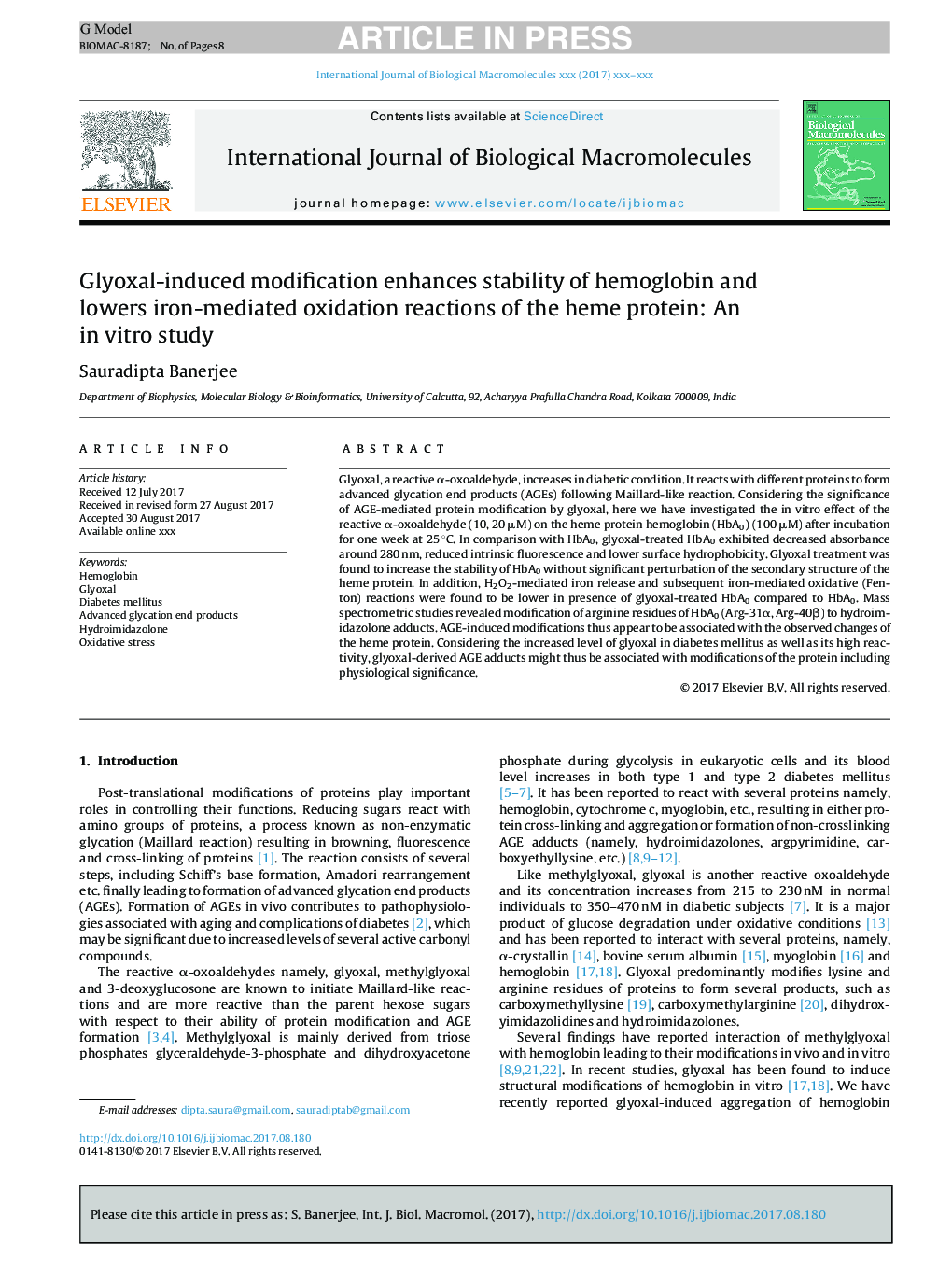| Article ID | Journal | Published Year | Pages | File Type |
|---|---|---|---|---|
| 8329029 | International Journal of Biological Macromolecules | 2018 | 8 Pages |
Abstract
Glyoxal, a reactive α-oxoaldehyde, increases in diabetic condition. It reacts with different proteins to form advanced glycation end products (AGEs) following Maillard-like reaction. Considering the significance of AGE-mediated protein modification by glyoxal, here we have investigated the in vitro effect of the reactive α-oxoaldehyde (10, 20 μM) on the heme protein hemoglobin (HbA0) (100 μM) after incubation for one week at 25 °C. In comparison with HbA0, glyoxal-treated HbA0 exhibited decreased absorbance around 280 nm, reduced intrinsic fluorescence and lower surface hydrophobicity. Glyoxal treatment was found to increase the stability of HbA0 without significant perturbation of the secondary structure of the heme protein. In addition, H2O2-mediated iron release and subsequent iron-mediated oxidative (Fenton) reactions were found to be lower in presence of glyoxal-treated HbA0 compared to HbA0. Mass spectrometric studies revealed modification of arginine residues of HbA0 (Arg-31α, Arg-40β) to hydroimidazolone adducts. AGE-induced modifications thus appear to be associated with the observed changes of the heme protein. Considering the increased level of glyoxal in diabetes mellitus as well as its high reactivity, glyoxal-derived AGE adducts might thus be associated with modifications of the protein including physiological significance.
Keywords
Related Topics
Life Sciences
Biochemistry, Genetics and Molecular Biology
Biochemistry
Authors
Sauradipta Banerjee,
